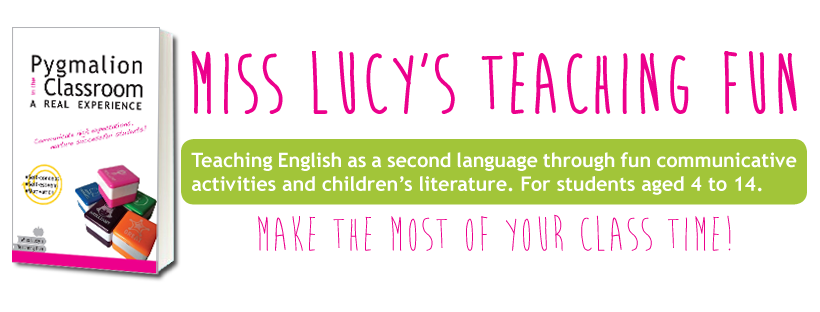Today I am going to briefly tell you about an option we have to present vocabulary in an effective way to the youngest children, where by youngest I mean children in preschool and first years of primary school, although, I warn you, never underestimate the fascination that a flap can have on a child's mind. It produces exactly the same expectation and excitement as waiting and opening Christmas presents, I guarantee it.
So with the excuse of the arrival - finally! - of spring, I took to class my big cardboard book about the seasons of the little mouse Maisy , which, with a lot of windows, captured the attention of all the children in the class in less than 3 seconds, as always.
Now, we all know - and if not, I'll tell you now - that when a person is interested in what they are studying they learn four times more than if he or she didn't have that interest, and precisely because of that, nowadays, so much importance is given to presenting the contents in such a way that they catch the attention of the students.
Soon everyone wanted to see what was hidden behind the flaps and I asked each child to open one and repeat the name of the animal behind it. Once the flaps were finished, I closed them again and, in order to practice a little more, I called each student to ask them where the animal was: they didn't miss a single one!
As you can understand in this second phase we work on the recognition of the word: through this exercise we create a direct link between word and image without going through the first language. That is why when you ask children who study English in school "how do you say horse in English?" They may not know how to answer right away as they never work with the translation, as I tell you in my book Mi Hijo Habla Inglés.
There are literally an infinite number of lift-the-flap books and I encourage you to try them because, in addition to having a lot of magic, they encourage active and multi-sensory learning, since children use their different senses - sight, hearing, touch - to interact with it. Moreover, as part of a story or a brief history, words are shown in meaningful contexts and this boosts a deeper learning of them.
Finally, during this type of activity, the children's speaking skills are also encouraged and, as always, when kids have fun, they lose any inhibition when it comes to speaking, repeating and trying to say their own words.
The collections that have so far been most useful to me when working on vocabulary with my students are those of Maisy, the little mouse, and Spot, the puppy, with some incursions of Peter Rabbit and Pete the Cat.
--> Quiero leer este post en castellano












So with the excuse of the arrival - finally! - of spring, I took to class my big cardboard book about the seasons of the little mouse Maisy , which, with a lot of windows, captured the attention of all the children in the class in less than 3 seconds, as always.
Now, we all know - and if not, I'll tell you now - that when a person is interested in what they are studying they learn four times more than if he or she didn't have that interest, and precisely because of that, nowadays, so much importance is given to presenting the contents in such a way that they catch the attention of the students.
Soon everyone wanted to see what was hidden behind the flaps and I asked each child to open one and repeat the name of the animal behind it. Once the flaps were finished, I closed them again and, in order to practice a little more, I called each student to ask them where the animal was: they didn't miss a single one!
As you can understand in this second phase we work on the recognition of the word: through this exercise we create a direct link between word and image without going through the first language. That is why when you ask children who study English in school "how do you say horse in English?" They may not know how to answer right away as they never work with the translation, as I tell you in my book Mi Hijo Habla Inglés.
There are literally an infinite number of lift-the-flap books and I encourage you to try them because, in addition to having a lot of magic, they encourage active and multi-sensory learning, since children use their different senses - sight, hearing, touch - to interact with it. Moreover, as part of a story or a brief history, words are shown in meaningful contexts and this boosts a deeper learning of them.
Finally, during this type of activity, the children's speaking skills are also encouraged and, as always, when kids have fun, they lose any inhibition when it comes to speaking, repeating and trying to say their own words.
The collections that have so far been most useful to me when working on vocabulary with my students are those of Maisy, the little mouse, and Spot, the puppy, with some incursions of Peter Rabbit and Pete the Cat.
--> Quiero leer este post en castellano














